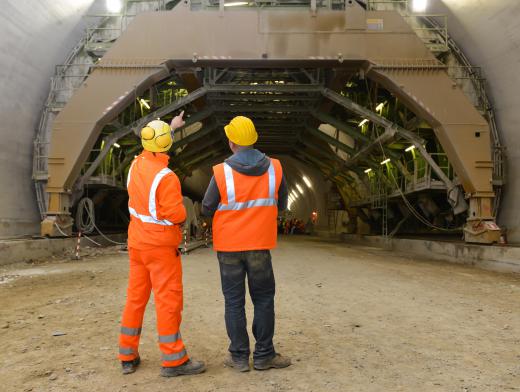What are Engineering Projects?
 Mary Elizabeth
Mary Elizabeth
The phrase engineering projects is not a technical term. It can refer to any of three things. It can mean simply any projects in which engineering plays a role, projects in which the engineering design process is employed, or the work overseen by a project engineer.
With the first meaning, engineering projects is often used to apply to science fair projects or other projects that involve engineering in some way—that is, in which something is built, a loose understanding of engineering—but are not created following the engineering design process. That this happens with science fair projects, for example, may be because scientific inquiry has long been taught in school, while the design process has not received nearly as much attention. It can also happen because science fairs may require that project entries follow the steps of scientific inquiry.

The second meaning of engineering projects refers to projects that are like the first in every regard except that they do use the engineering design process. In order to understand the difference between the first and second meanings of engineering project, it is necessary to understand the difference between scientific inquiry and the design process. This is because, though scientific inquiry and the engineering design process have similarities, they address different objectives.
Scientific inquiry involves identifying questions that can be answered through investigation; designing and conducting an investigation; using appropriate tools and techniques to collect, analyze, and interpret data; and using logical thought with regard to the evidence to develop descriptions, models, explanations, and predictions, which may then be shared. The engineering design process involves defining a need, doing background research, establishing design criteria, preparing preliminary or draft designs, building and testing a prototype, testing and redesigning as appropriate, and presenting the results. Thus scientific inquiry focuses on answering questions and engineering projects of the second type on meeting needs.
Engineering projects of the third type also use the engineering design process and focus on meeting needs. In addition, they are linked to the tiered system of engineering qualifications. Engineers must be licensed in the United States and elsewhere.
A new model for licensing was recommended by a task force of the NCEES (National Council of Examiners for Engineering and Surveying) in 2003. In this model, a Graduate Engineer has completed his or her education, an Associate Engineer has additionally passed the Fundamentals of Engineering (FE) examination, a Registered Engineer is the first level of licensure and means that the Associate Engineer has now had four years of experience and agreed to his or her state board’s ethics code, and a Professional Engineer is the second level of licensure, offered to Registered Engineers who have passed the Principles and Practice of Engineering (PE) examination.
In this schema, a Graduate Engineer does not have a privilege to practice engineering. At the level of Associate Engineer, he or she can be an Associate Project Engineer. Full responsibility for engineering projects cannot be assumed until one has attained the level of Professional Engineer, at which point, one can legally take responsibility for engineering documents, including designs.
AS FEATURED ON:
AS FEATURED ON:











Discuss this Article
Post your comments